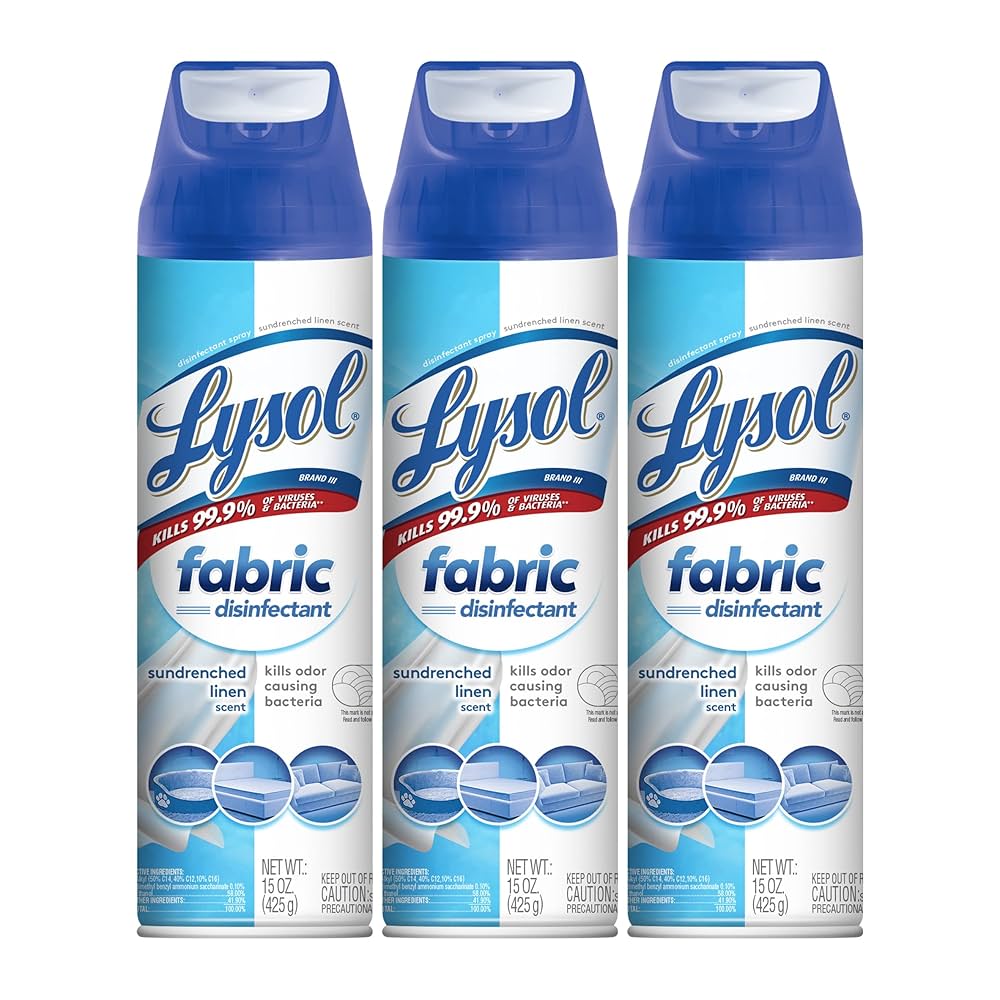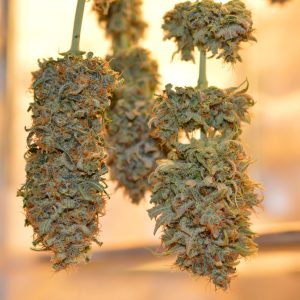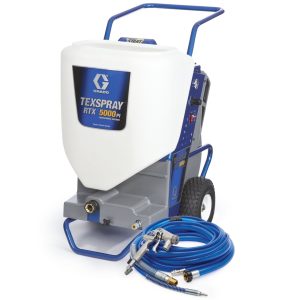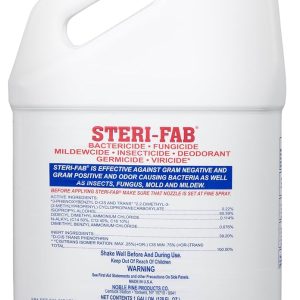
The modern world has heightened our awareness of germs, bacteria, and viruses lurking on everyday surfaces, particularly on the soft fabrics we interact with daily. Fabric sanitizer spray has emerged as an essential household product that provides an effective solution for maintaining hygienic soft surfaces between regular washing cycles. Unlike traditional cleaning methods that require water and detergent, these specialized sprays offer instant sanitization for items that cannot be easily washed or need immediate attention.
What is Fabric Sanitizer Spray and How Does It Work?
Fabric sanitizer spray represents a breakthrough in surface sanitization technology, designed specifically for soft materials that traditional disinfectants might damage or stain. The spray creates a micro-fine mist which coats the fabric with a thin solution containing active ingredients that penetrate fabric fibers to eliminate harmful microorganisms at the source.
The science behind these products centers on antimicrobial agents, typically including isopropyl alcohol, quaternary ammonium compounds, or hydrogen peroxide-based formulations. Active ingredient 70% isopropyl alcohol kills 99.9% of bacteria and viruses within seconds of application, making it highly effective against a broad spectrum of pathogens including influenza, rhinovirus, and even coronavirus variants.
Key Active Ingredients in Fabric Sanitizer Sprays
| Ingredient Type | Effectiveness | Target Pathogens | Fabric Safety |
|---|---|---|---|
| Isopropyl Alcohol (70%) | 99.9% kill rate | Viruses, bacteria, fungi | Safe for most fabrics |
| Quaternary Ammonium | 99.8% efficacy | Bacteria, mold spores | Color-safe formula |
| Hydrogen Peroxide | 99.7% elimination | Odor-causing bacteria | May cause slight fading |
| Benzalkonium Chloride | 99.5% reduction | Gram-positive bacteria | Gentle on delicate fabrics |
The antimicrobial action occurs through multiple mechanisms depending on the active ingredient. Alcohol-based formulations work by disrupting cellular membranes and denaturing proteins essential for microbial survival. Quaternary ammonium compounds create ionic disruption that breaks down bacterial cell walls, while hydrogen peroxide generates reactive oxygen species that oxidize cellular components of harmful microorganisms.
Benefits of Using Fabric Sanitizer Spray
Eliminates Odor-Causing Bacteria
Fabric sanitizers are bleach-free, safe for colors, and remove 99.9% of odor causing bacteria that traditional washing alone cannot eliminate. This is particularly beneficial for items like athletic wear, pet bedding, and upholstered furniture that absorb and retain unpleasant odors from sweat, food, smoke, and environmental pollutants. The spray penetrates deep into fabric fibers where odor-causing bacteria thrive in moist, warm conditions.
Extends Time Between Washes
Regular use of fabric sanitizer spray significantly reduces the frequency of washing for items that don’t require immediate cleaning but need sanitization. This is especially valuable for delicate fabrics, dry-clean-only items, or bulky materials like comforters and curtains that are expensive or inconvenient to launder frequently. By eliminating germs and refreshing fabrics between washes, these sprays help maintain hygiene while preserving fabric integrity.
Convenient Application for Hard-to-Wash Items
Many household textiles cannot be easily machine washed, including mattresses, car seats, pillows, stuffed animals, and furniture upholstery. Fabric Sanitizer Spray is a pre-treat spray that kills 99.9% of odor-causing bacteria in your laundry, and even removes stubborn stains when applied directly to affected areas before regular washing cycles.
Travel and Public Space Safety
Use this sanitizer on airplanes, buses, trains, public seating areas, and anywhere else you think you may be more exposed than usual to potentially harmful pathogens. Portable fabric sanitizer sprays provide peace of mind when using hotel bedding, rental car interiors, or any public fabric surfaces that cannot be controlled for cleanliness.
Types of Fabric Sanitizer Spray Products
Aerosol Spray Formulations
Aerosol fabric sanitizer sprays offer the most convenient application method with consistent coverage and penetration. The pressurized delivery system creates an ultra-fine mist that distributes evenly across fabric surfaces without oversaturation. These products typically contain propellants that help active ingredients reach deep into fabric weaves while evaporating quickly to prevent moisture damage.
Advantages of Aerosol Sprays:
- Consistent coverage – Even distribution prevents patchy sanitization
- Quick drying – Rapid evaporation minimizes fabric dampness
- Portable size – Easy to carry for travel or spot treatments
- No dilution required – Ready-to-use formulation maintains effectiveness
Trigger Spray Bottles
Non-aerosol trigger sprays provide more control over application volume and direction, making them ideal for targeted treatments or sensitive fabrics. These formulations often contain higher concentrations of active ingredients since they don’t require propellants, potentially offering superior antimicrobial efficacy for heavily contaminated items.
Concentrated Formulas
Some manufacturers offer concentrated fabric sanitizer spray solutions that require dilution with water before use. While less convenient than ready-to-use products, concentrates provide economic benefits for high-volume applications and allow users to adjust strength based on specific sanitization needs.
How to Properly Apply Fabric Sanitizer Spray
Pre-Application Preparation
Before applying any fabric sanitizer spray, remove visible dirt, debris, or stains from the target area. Vacuum upholstered furniture and carpeted surfaces to eliminate loose particles that could interfere with sanitizer penetration. For clothing items, shake out dust and lint, then lay flat on a clean surface for even application.
Essential preparation steps:
- Test on inconspicuous area – Check for color fastness and fabric compatibility
- Ensure adequate ventilation – Open windows or use fans to prevent inhalation of vapors
- Remove pets and children – Keep sensitive individuals away during application and drying
- Wear protective equipment – Use gloves and avoid direct skin contact
Application Technique
To kill odor-causing bacteria on soft surfaces: spray a light even coating on fabric until wet. DO NOT SATURATE. Let air dry completely before use. Hold the spray bottle 6-8 inches from the fabric surface to ensure optimal coverage without creating puddles or oversaturation that could damage fabrics or promote mold growth.
Step-by-step application process:
- Shake container thoroughly – Ensure active ingredients are properly mixed
- Apply in overlapping patterns – Use systematic sweeping motions for complete coverage
- Focus on high-contact areas – Pay extra attention to armrests, headrests, and frequently touched zones
- Allow proper drying time – Wait 10-15 minutes before using treated items
- Repeat if necessary – For difficult odors or heavy fabrics, repeat application
Best Practices for Different Fabric Types
Natural Fiber Fabrics
Cotton, linen, wool, and silk require special consideration when using fabric sanitizer spray due to their absorbent nature and potential for damage from harsh chemicals. Natural fibers readily absorb moisture, making them susceptible to oversaturation and subsequent shrinkage, color bleeding, or texture changes.
Cotton and Linen Treatment: These robust natural fibers handle most fabric sanitizers well but require careful attention to moisture levels. Apply light, even coats and ensure complete drying before use. For heavily soiled items, pre-treat with sanitizer spray before regular washing to enhance cleaning effectiveness.
Wool and Silk Care: Delicate protein fibers need gentler formulations without harsh alcohols or bleaching agents. Look for pH-neutral fabric sanitizer sprays specifically labeled as safe for wool and silk. Apply sparingly and test on hidden areas first to prevent damage to these expensive materials.
Synthetic Fabrics
Polyester, nylon, acrylic, and blended fabrics typically demonstrate excellent compatibility with fabric sanitizer sprays due to their synthetic composition and reduced absorbency. These materials resist staining and color changes while providing effective pathogen elimination.
Performance Advantages:
- Quick drying – Low absorbency prevents oversaturation
- Color stability – Synthetic dyes resist fading from sanitizer ingredients
- Durability – Regular sanitizer use doesn’t compromise fabric integrity
- Versatility – Compatible with most commercial formulations
Specialty Fabrics
Leather, suede, vinyl, and technical fabrics used in outdoor gear require specialized fabric sanitizer spray products designed for their unique properties. Always consult manufacturer care instructions before applying any sanitizer to prevent permanent damage or voiding warranties.
Safety Considerations and Precautions
Chemical Safety
Fabric sanitizer spray products contain potent antimicrobial agents that require careful handling to prevent adverse health effects. Active ingredient 70% isopropyl alcohol kills 99.9% of bacteria and viruses but can also cause skin irritation, respiratory problems, and eye damage if misused.
Important safety measures:
- Use in well-ventilated areas – Prevent vapor accumulation that could cause headaches or dizziness
- Avoid skin contact – Wear gloves and protective clothing during application
- Keep away from heat sources – Alcohol-based sprays are flammable and should not be used near open flames
- Store properly – Keep containers sealed and away from children and pets
- Read all labels – Follow manufacturer instructions for safe use and storage
Pet and Child Safety
Households with pets and young children require extra precautions when using fabric sanitizer spray products. Many formulations contain ingredients that are toxic if ingested or can cause respiratory irritation in sensitive individuals.
Child safety protocols:
- Secure storage – Keep products in locked cabinets above child reach
- Supervised application – Never allow children to handle or apply sanitizer sprays
- Complete drying – Ensure treated surfaces are completely dry before child contact
- Emergency preparedness – Keep poison control contact information readily available
Pet considerations:
- Remove pets during application – Prevent direct exposure to spray vapors
- Check ingredient safety – Some chemicals are particularly toxic to cats or dogs
- Allow extended drying time – Pets have heightened sensitivity to chemical residues
- Monitor for reactions – Watch for signs of respiratory distress or skin irritation
Popular Fabric Sanitizer Spray Brands and Products
Clorox Fabric Sanitizer
Clorox™ Fabric Sanitizer Spray is a pre-treat spray that kills 99.9% of odor-causing bacteria in your laundry, and even removes stubborn stains with a proven track record in household sanitization. Available in both scented and unscented formulations, Clorox products offer reliable antimicrobial performance for various fabric types.
Product specifications:
- Active ingredients: Alkyl dimethyl benzyl ammonium chlorides
- Kill rate: 99.9% of bacteria and viruses
- Safe for colors: Bleach-free formulation prevents fading
- Application method: Aerosol spray for even coverage
- Scent options: Lavender, Fresh, or Unscented varieties
Lysol Disinfectant Spray
Lysol Disinfectant Sprays kills 99.9% of the viruses and bacteria your family comes in contact with every day and can be safely used on both hard and soft surfaces. The versatility of Lysol products makes them suitable for comprehensive household sanitization beyond just fabric applications.
Tide Antibacterial Fabric Spray
It’s my absolute favorite product to use 10/10 will always recommend this over others according to customer reviews, highlighting the effectiveness and user satisfaction with Tide’s fabric sanitization products. This spray specifically targets mold and mildew while providing long-lasting freshness.
Cost-Effective Sanitization Strategies
Bulk Purchasing Benefits
Regular users of fabric sanitizer spray can realize significant cost savings through bulk purchasing strategies. Buying larger containers or multi-packs reduces the per-unit cost while ensuring adequate supply for ongoing sanitization needs.
Economic advantages:
- Lower per-ounce costs – Bulk sizes offer 20-40% savings over individual bottles
- Reduced shopping frequency – Stock up during sales to minimize repeated purchases
- Consistent availability – Avoid stockouts during high-demand periods
- Environmental benefits – Fewer containers reduce packaging waste
DIY Fabric Sanitizer Alternatives
Budget-conscious consumers can create effective homemade fabric sanitizer spray using readily available ingredients, though commercial products typically offer superior convenience and tested efficacy.
Basic DIY formula:
- 2 cups distilled water
- 1 cup 70% isopropyl alcohol
- 2 tablespoons white vinegar
- 10-15 drops essential oil (optional for fragrance)
- 1 teaspoon liquid castile soap
Mix ingredients in a clean spray bottle and shake before each use. This homemade solution provides basic antimicrobial action but lacks the specialized formulation and testing of commercial products.
Integration with Regular Cleaning Routines
Weekly Maintenance Schedule
Incorporating fabric sanitizer spray into regular cleaning routines maximizes its effectiveness while maintaining household hygiene standards. Develop a systematic approach that addresses high-touch fabric surfaces consistently.
Recommended weekly schedule:
- Monday: Sanitize upholstered furniture and throw pillows
- Wednesday: Treat car seats, strollers, and transportation fabrics
- Friday: Focus on bedroom textiles including mattresses and curtains
- Sunday: Address laundry room items and cleaning cloths
Seasonal Deep Cleaning Applications
Quarterly or seasonal applications of fabric sanitizer spray should target items that receive less frequent attention but accumulate significant bacterial and odor buildup over time.
Seasonal targets:
- Spring: Outdoor cushions, patio furniture, and stored winter items
- Summer: Beach gear, camping equipment, and humid-weather fabrics
- Fall: Back-to-school items, sports equipment, and transitional clothing
- Winter: Holiday decorations, heavy coats, and indoor air circulation items
Selecting the Right Fabric Sanitizer Spray
Ingredient Considerations
Choose fabric sanitizer spray products based on specific household needs, fabric types, and sensitivity requirements. Different active ingredients offer varying benefits and potential drawbacks depending on application scenarios.
Selection criteria:
- Fabric compatibility – Ensure products are safe for your specific materials
- Sensitivity concerns – Select fragrance-free options for allergic individuals
- Antimicrobial spectrum – Verify effectiveness against target pathogens
- Environmental impact – Consider biodegradable and eco-friendly formulations
- Cost per application – Calculate actual usage costs based on coverage area
Reading Product Labels
Understanding product labels helps consumers make informed decisions about fabric sanitizer spray purchases and ensures safe, effective use.
Key label information:
- EPA registration number – Confirms antimicrobial claims are government-verified
- Active ingredient percentages – Higher concentrations may offer better efficacy
- Surface compatibility – Lists approved and prohibited fabric types
- Contact time requirements – Specifies how long product must remain wet to be effective
- Safety warnings – Important precautions for proper handling and storage
Advanced Applications and Professional Uses
Healthcare Settings
Medical facilities, nursing homes, and healthcare practices rely on fabric sanitizer spray for maintaining sanitary conditions on soft surfaces that cannot withstand harsh disinfectants or frequent washing.
Healthcare applications:
- Patient room textiles – Curtains, bed linens, and privacy screens
- Mobility equipment – Wheelchair cushions, walker grips, and assistive devices
- Waiting area furniture – Upholstered seating and decorative fabrics
- Staff break rooms – Soft furnishings in high-use common areas
Educational Institutions
Schools, universities, and childcare centers utilize fabric sanitizer spray to maintain hygienic environments while managing large volumes of soft surfaces that experience heavy daily use.
Educational facility needs:
- Classroom carpets – High-traffic areas requiring frequent sanitization
- Library materials – Books, magazines, and reference materials
- Athletic equipment – Mats, protective gear, and team uniforms
- Transportation – School bus seats and safety equipment
Hospitality Industry Applications
Hotels, restaurants, and entertainment venues depend on fabric sanitizer spray to ensure guest safety while maintaining aesthetic appeal of soft furnishings.
Commercial hospitality uses:
- Guest room textiles – Bedspreads, curtains, and upholstered furniture
- Restaurant seating – Booth cushions, chair covers, and tablecloths
- Event spaces – Rental linens, decorative fabrics, and portable seating
- Fitness facilities – Exercise mats, towels, and equipment covers
For related home fragrance solutions, consider exploring flower spray options that provide pleasant scents alongside sanitization benefits.
Technology Innovations in Fabric Sanitization
Electrostatic Spray Systems
Advanced fabric sanitizer spray application methods now include electrostatic technology that charges sanitizer particles to improve adhesion and coverage on fabric surfaces. This professional-grade equipment ensures more thorough penetration and longer-lasting antimicrobial protection.
Electrostatic advantages:
- Enhanced coverage – Charged particles wrap around fabric fibers more completely
- Reduced waste – Better adherence minimizes overspray and product loss
- Uniform distribution – Consistent sanitizer application across irregular surfaces
- Professional efficiency – Faster application for large areas and commercial use
UV-C Integration
Some facilities combine fabric sanitizer spray treatments with ultraviolet-C light exposure for comprehensive pathogen elimination. This dual approach addresses both surface contamination and embedded microorganisms within fabric structures.
Smart Monitoring Systems
Emerging technologies include sensors that detect microbial contamination levels on fabric surfaces, automatically triggering fabric sanitizer spray applications when preset thresholds are exceeded. These systems optimize sanitization frequency while minimizing unnecessary chemical use.
Environmental Impact and Sustainability
Eco-Friendly Formulations
Growing environmental awareness has driven development of sustainable fabric sanitizer spray products that maintain antimicrobial effectiveness while reducing ecological impact.
Green product features:
- Biodegradable ingredients – Break down naturally without environmental persistence
- Plant-based antimicrobials – Derived from renewable sources instead of petroleum products
- Reduced packaging – Concentrated formulas and refillable containers minimize waste
- Low VOC content – Minimal volatile organic compounds improve indoor air quality
Responsible Disposal
Proper disposal of fabric sanitizer spray containers and expired products prevents environmental contamination while complying with local waste management regulations.
Disposal guidelines:
- Empty containers completely – Use all product before disposal to minimize waste
- Check local recycling rules – Many spray bottles are recyclable through municipal programs
- Remove labels and caps – Separate materials for proper recycling processing
- Never pour down drains – Prevents water system contamination and treatment issues
Market Trends and Future Developments
Consumer Demand Drivers
The fabric sanitizer spray market continues expanding due to increased health consciousness, convenience requirements, and lifestyle changes accelerated by recent global health concerns.
Growth factors:
- Remote work trends – Home office sanitization needs drive product demand
- Travel resumption – Portable sanitization for hotels and transportation
- Athletic participation – Sports equipment and gear sanitization requirements
- Pet ownership growth – Increased need for pet-safe fabric sanitization
Innovation Opportunities
Research and development efforts focus on improving fabric sanitizer spray effectiveness, safety, and user experience through technological advances and formulation improvements.
Development areas:
- Extended efficacy – Longer-lasting antimicrobial protection between applications
- Multi-functional products – Combined cleaning, sanitizing, and deodorizing action
- Targeted pathogen elimination – Specialized formulas for specific microbial threats
- Smart packaging – Interactive containers with usage tracking and replacement alerts
Frequently Asked Questions About Fabric Sanitizer Spray
What is fabric sanitizer spray and how does it work?
Fabric sanitizer spray is a specialized antimicrobial product designed to eliminate bacteria, viruses, and odor-causing microorganisms on soft surfaces that cannot be easily washed. It works by delivering active ingredients like isopropyl alcohol or quaternary ammonium compounds directly to fabric fibers, where they disrupt microbial cell structures and eliminate pathogens within seconds of contact.
Is fabric sanitizer spray safe to use on all fabric types?
Most commercial fabric sanitizer sprays are safe for common fabric types including cotton, polyester, and fabric blends, but delicate materials like silk, wool, or leather may require specialized formulations. Always test products on an inconspicuous area first and check manufacturer recommendations for specific fabric compatibility before full application.
How often should I use fabric sanitizer spray on household items?
The frequency of fabric sanitizer spray application depends on usage patterns and contamination risk. High-touch items like couch cushions and car seats benefit from weekly treatment, while less frequently used items like curtains or decorative pillows may only need monthly sanitization. Increase frequency during illness outbreaks or high-exposure periods.
Can fabric sanitizer spray replace regular washing?
Fabric sanitizer spray is designed to supplement, not replace, regular washing and cleaning routines. While it effectively eliminates germs and odors between washes, it cannot remove visible dirt, stains, or deep-set soil that requires detergent and water action. Use sanitizer spray to extend time between washes and maintain hygiene on items that cannot be easily laundered.
Does fabric sanitizer spray leave any residue on treated surfaces?
Quality fabric sanitizer spray products are formulated to evaporate completely without leaving visible residues or sticky films on treated fabrics. However, some products may leave a slight scent or texture change, particularly on very delicate or porous materials. Allow adequate drying time and ensure proper ventilation during application to minimize any residual effects.
Are there any health risks associated with fabric sanitizer spray?
When used according to manufacturer instructions, fabric sanitizer spray poses minimal health risks to users. However, direct skin contact, inhalation of concentrated vapors, or accidental ingestion can cause irritation or more serious reactions. Always use products in well-ventilated areas, avoid skin contact, and keep containers away from children and pets.
What’s the difference between fabric sanitizer spray and regular disinfectant?
Fabric sanitizer spray is specifically formulated for soft, porous surfaces and typically uses gentler active ingredients that won’t damage or discolor fabrics. Regular disinfectants are designed for hard, non-porous surfaces and may contain bleach or harsh chemicals that can harm fabrics, cause color changes, or leave stains on soft materials.
How long does fabric sanitizer spray protection last?
The antimicrobial protection from fabric sanitizer spray typically lasts until the next contamination event or significant moisture exposure. While the initial kill rate is achieved within seconds, ongoing protection varies based on environmental conditions, fabric type, and usage patterns. Most products do not provide residual antimicrobial activity beyond the initial application period.
Ready to protect your home’s soft surfaces? Browse our selection of professional-grade fabric sanitizer spray products to find the perfect solution for your sanitization needs. With proven effectiveness against 99.9% of harmful pathogens, these products provide peace of mind and enhanced hygiene for your family’s everyday fabric items.





